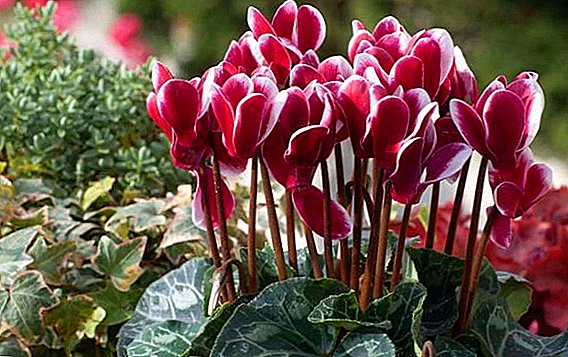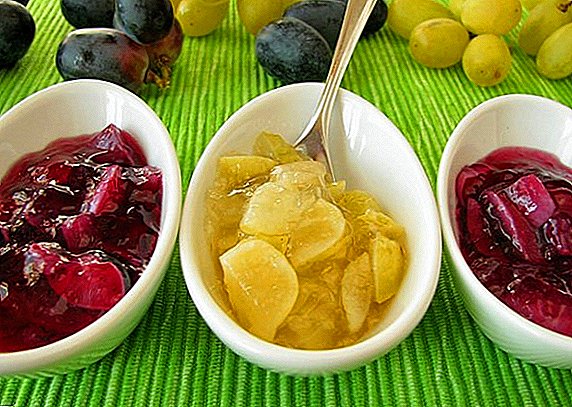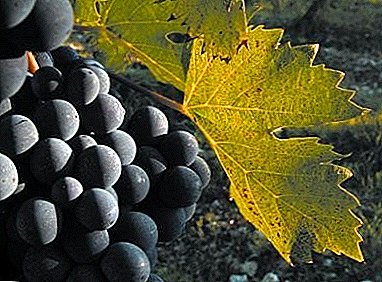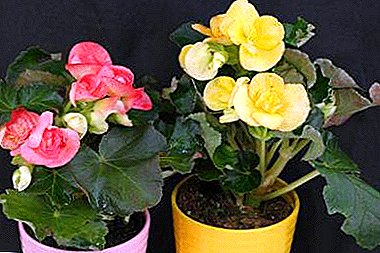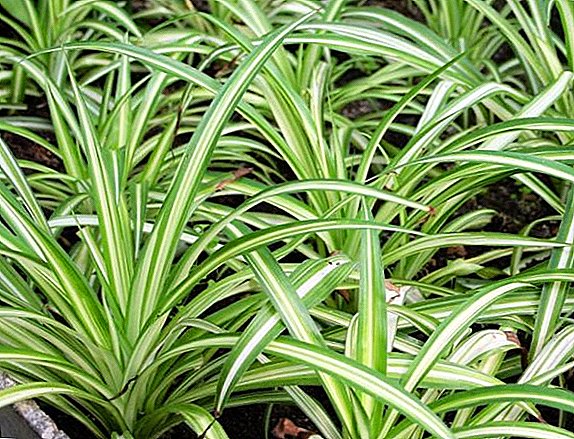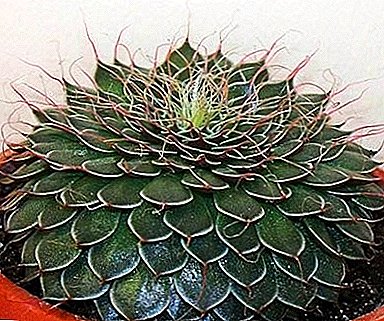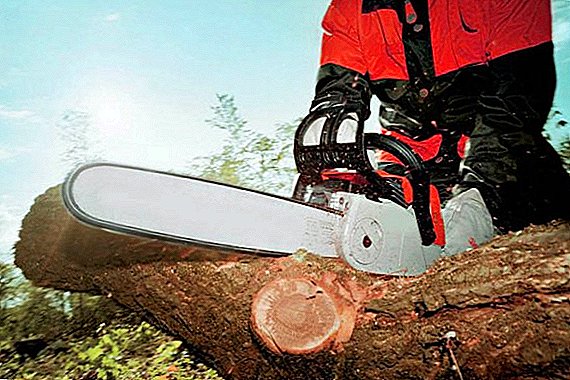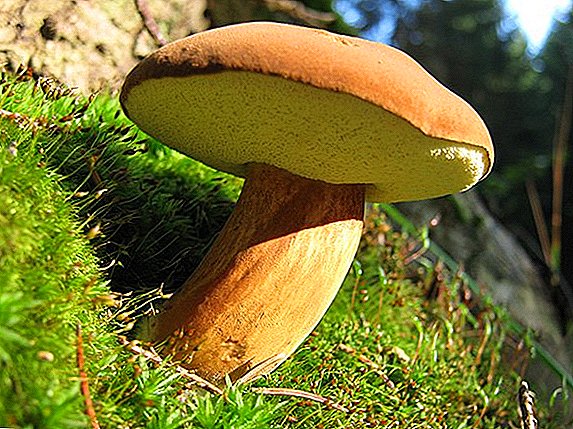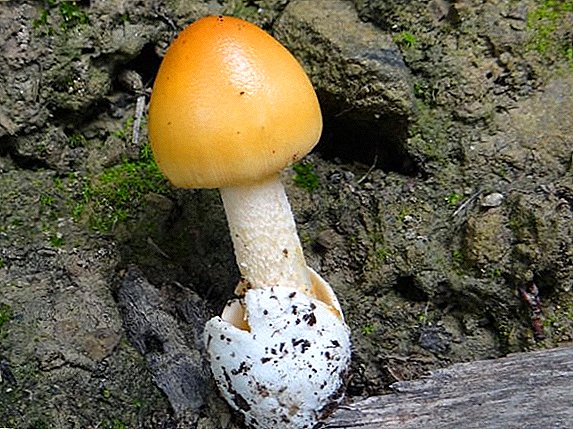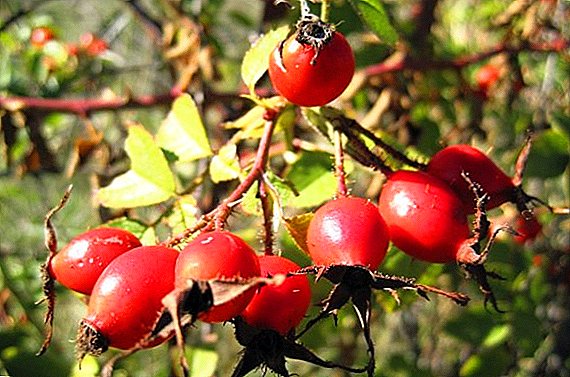 Dogrose - indispensable plant on any personal plot. In spring, the hedges of the shrub are densely showered with delicate flowering. And its fruits have unsurpassed healing properties. Infusions, decoctions, rosehip oil is used to strengthen the immune system, increase mental and physical abilities of a person, normalize blood pressure, cardiovascular system, gastrointestinal tract, treat colds and nervous disorders.
Dogrose - indispensable plant on any personal plot. In spring, the hedges of the shrub are densely showered with delicate flowering. And its fruits have unsurpassed healing properties. Infusions, decoctions, rosehip oil is used to strengthen the immune system, increase mental and physical abilities of a person, normalize blood pressure, cardiovascular system, gastrointestinal tract, treat colds and nervous disorders.
Did you know? The oldest dog rose grows on the territory of the Cathedral of Hildesheim in Germany. He is, according to various estimates, from 400 to 1000 years.
There are many species of wild rose, but there are versatile varieties that have excellent taste and good resistance to adverse weather conditions, ideal for growing in the Moscow region. In addition, modern selection of wild rose varieties found in this region are distinguished by high yields and are free from the main biological disadvantage - they are virtually beship.
"Scarlet"
 Variety "Crimson" is great for the climate of central Russia. It is characterized by winter hardiness, good yield, high tolerance to heat and medium resistance to drought. The bush is resistant to mildew and black spot.
Variety "Crimson" is great for the climate of central Russia. It is characterized by winter hardiness, good yield, high tolerance to heat and medium resistance to drought. The bush is resistant to mildew and black spot.
Variety yield - more than 3 kg of fruit from the mother plant. The average yield "Bagryany" - 19.8 centners per 1 hectare of planted plants. Maximum yield - 25.2 centners per 1 ha of bushes.
Large mid-season wild rose with red pear-shaped berries weighing 2.4-4.7 g, with an elongated stem, rich sweet-sour taste. Capacity in fruits of ascorbic acid reaches 29.1 mg /%, sugars 6.1 mg /% and 1.4 mg /% acids.
The variety of Chelyabinsk selection is distinguished by weak short spikes located perpendicularly at the base of the shoots. The shoots are light green, slightly curved, medium-sprouting, medium-grown, with large green leaves. The leaf plate is smooth and concave, with sharp short teeth.
Flowers "Crimson" medium size, bright color, with two-flowered inflorescences.
With the help of a hedge, namely: the crown of the crown, thuja of the western "Brabant", Korean fir, variegated sod, Campsis, clematis, cypress, white sod, Padubolithia and Kobey, you can create a truly unique landscape design on your site.Rosehip is self-sterile, but it reproduces well with green cuttings. The most suitable pollinators of the variety are “Ural champion”, “Vorontsovsky-1”, “Vorontsovsky-3”, “Vitaminny”.
The variety is approved and registered in the State Register of breeding achievements that are approved for use.
Did you know? Wild rose flowers help determine the time of day: the buds bloom in the morning between 4-5 hours, and close in the evening between 7 and 8 hours.
Vorontsovskiy
 In the All-Union Vitamin Research Institute (VNIVI), another variety of rose hips was created, which is perfectly suitable for growing conditions in the Moscow region - Vorontsovsky.
In the All-Union Vitamin Research Institute (VNIVI), another variety of rose hips was created, which is perfectly suitable for growing conditions in the Moscow region - Vorontsovsky.
Vorontsovskiy-1 - It is an interspecific hybrid of Webb’s wild rose and a wrinkled one, reaching a height of almost 2.5 m. The direct annual shoots are rich green in color, the perennial ones are brown-brown. Single spikes are found predominantly in the radical part of the branches, and in the middle and upper parts they are extremely rare. 
The variety is quite frost-resistant, perfectly tolerates diseases, forms many offspring from the roots.
Oval-elongated fruits of the plant ripen by the end of August. Harvest from the bush "Vorontsovsky-1" usually collected in the amount of 2-3.5 kg. Berries contain up to 3000 mg /% ascorbic acid, up to 950 mg /% citrine, folic acids and 0.5 mg /%.
Vitamin VNIVI is an excellent pollinator for the variety.
Vorontsovskiy-2 - A hybrid of Webb and Cinnamon hips. It forms a shrub reaching 2.5 meters in height, with spiny light brown branches sprinkled with 1-2 spikes along the entire length from the base to the top of the shoots. The leaves of the shrub are smooth, dark green at the top, painted gray-green at the bottom. At the base of the main vein of the leaflet also has a single spike. 
The fruits of Vorontsovskiy-2 are pear-shaped, contain up to 3000 mg /% ascorbic acid, up to 650 mg /% citrine. The crop ripens by the end of August and reaches up to 2.5 kg of berries from one plant.
The variety perfectly tolerates frost, forms a small number of offspring. Pollinates dogrose "Vitamin" VNIVI.
Vorontsovsky-3 - This is a hybrid of the same Webb and Cinnamon hips. The height of the shrub reaches 2 meters, slightly sprawling, with medium gray-brown shoots and rich green leaves. The thorns of the "wild rose" are located at an obtuse angle in the lower and central part of the branches to the place of their branching.
"Vorontsovsky-3" is blooming at the end of August with medium pale pink buds. Berries ovate-elongated, red, with a skin of medium density. Fruit weighing 1.9 g contains a sufficient amount of ascorbic acid - 3200 mg /%, carotene 2.5 mg /%, citrine 1700 mg /%.
The plant tolerates winter, ripens early.
Important! From frequent thaws, characteristic of the climate of the Moscow region, the frost resistance of plants decreases, and the branches die out partially. In this regard, during the period of extreme cold bushes need additional protection.
The yield of one bush - from 1.6 to 2.7 kg rose hips or 63 centners per 1 hectare of planted culture.
Vorontsovskiy has been at the state testing of varieties since 1966.
"Geisha"
 Geisha is a low-growing, upright garden briar with large dark crimson flowers. The shoots of the bush are of medium thickness, covered with yellowish spikes of the hooked form. The leaf plate is dark green, concave along the central vein.
Geisha is a low-growing, upright garden briar with large dark crimson flowers. The shoots of the bush are of medium thickness, covered with yellowish spikes of the hooked form. The leaf plate is dark green, concave along the central vein.
The fruits of this variety are large, oval, orange-red in color, weighing up to 3 g. Ripen usually by mid-August. The variety "Geisha" is highly resistant, remontant, medium resistant to both pests and diseases.
The average crop yield from one plant - 4,2 kg of berries
The variety is included in GRSD approved for use.
Did you know? After the most ancient excavations in Switzerland, it was discovered that dog rose was used by man in the Ice Age.
"Hedgehog"
 Variety dog rose "Hedgehog" winter-hardy, resistant to drought and heat, remontant, has an average resistance to pests and diseases.
Variety dog rose "Hedgehog" winter-hardy, resistant to drought and heat, remontant, has an average resistance to pests and diseases.
The bush of a "wild rose" is weak-growing and half-upright, with straight thick branches of soft-brown color. Single canine spines scattered along the entire length of the shoot. Medium-sized green leaves have a matte, convex, wrinkled plate. Nine lobes of oval leaves are decorated with small cuts. Blossoms "Hedgehog" beautiful dark crimson flowers.
Fruit weight an average of 3.8 g, oval berries, creamy orange. Ripen, as a rule, in the second decade of August.
Differs in enviable productivity - 4.2 kg per uterine bush or 105 centners from 1 ha of bushes. The variety is included in the State Register of the Russian Federation.
"Large-fruited VNIVI"
 Rosehip "Large-fruited VNIVI" gives a harvest from August to October. The variety lives up to its name, has massive flat-round berries of 11-13 g. The skin of the fruit is orange-red and glossy. They contain more than 1000 mg /% ascorbic acid, 950 mg /% bioflavonoids, 4.7 mg /% carotene and 2.8 mg /% tocopherols.
Rosehip "Large-fruited VNIVI" gives a harvest from August to October. The variety lives up to its name, has massive flat-round berries of 11-13 g. The skin of the fruit is orange-red and glossy. They contain more than 1000 mg /% ascorbic acid, 950 mg /% bioflavonoids, 4.7 mg /% carotene and 2.8 mg /% tocopherols.
The bush is very large, rather sprawling, it grows quickly, reaching 2 m. The young shoots are painted green, and the perennial branches are reddish-gray. The weighty lack of "Large-fruited" berries is an abundance of thorns; all shoots are densely covered with medium and small needles.
Medicinal plants such as bitter wormwood, Kalanchoe pinotum, zizifus, the bathing suit, lymphaeum, catnip, echinacea, chestnut, sage, linden and ash can not only cure, but also keep your body in good shape.The leaves of the shrub top smooth, shiny, and bottom "terry", gray-green. The bush blooms profusely with large pale pink buds from early summer to frost.
The plant perfectly tolerates the cold season. His yield reaches 4 kg of berries collected from 1 bush.
The variety is included in GRSD approved for use.
"Victory"
 The dog "Victory" is characterized by a weakly-spreading medium-growth shrub with light brown shoots of medium length. Light colored spikes are rarely scattered along the entire shoot.
The dog "Victory" is characterized by a weakly-spreading medium-growth shrub with light brown shoots of medium length. Light colored spikes are rarely scattered along the entire shoot.
The leaf has 5-9 smooth plates with small sharp teeth. During flowering shrub covered with pink flowers of medium size. Oval orange fruits are quite large - from 2 to 3.4 g. Fat-curly berries, sweet-sour with a light aroma. Ascorbic acid content in fruits is 3100 mg /%.
Berries ripen quite early - in early August. It is used for virtually all types of processing. Average yield reaches 26 centner on 1 hectares of bushes.
"Victory" is perfectly experiencing frost, not subject to disease and pests.
The variety is included in the GRS approved for use in 1999.
"Russian-1"
 "Russian-1" is a seedling from the free pollination of cinnamon dogrose. Very large fast-growing shrub, reaches a height of 2.5 m.
"Russian-1" is a seedling from the free pollination of cinnamon dogrose. Very large fast-growing shrub, reaches a height of 2.5 m.
Young shoots varieties of green, and mature branches - gray-brown. The spikes on the shoots are located in the basal part at an obtuse angle. The leaf plate is green and smooth from above, and ash-gray and fleecy from below.
Flowers plants are very fragrant, have a pink color. Fruits are spherical and pear-shaped, weighing just over 1 g. Ascorbic acid content in berries is 3200 mg /%, citrine - 4600 mg /%. Fruits ripen towards the end of August.
The harvest from one bush is equal 2.3 kg of berries, and from 40 hectares per hectare of bushes.
This type of dog rose is highly resistant to frost and rust.
The variety has been on the registry since 1986.
"Ruby"

"Ruby" - strong-growing shrub with straight thick shoots of brown-red color. Light colored spikes scattered throughout the length of the shoots, especially at the base.
The leaves of the shrub are large enough, green, with a straight matte and soft plate. The fruits are quite large, about 3.5 g, dark red, have a sweet and slightly sour taste. The berries are arranged in groups, have a round or slightly elongated shape, contain 3253 mg /% ascorbic acid. From one bush is usually collected 1 kg dogrose.
"Ruby" frost-resistant, not susceptible to diseases, early ripe.
Included in the registry in 1999.
Important! In order for interoperability to be most complete, at least 3-4 species of wild rose should be planted at once. In the same row the plants are planted at a distance of one and a half meters from each other.
"Titanium"
 Rosehip "Titan" - srednerosly, and sometimes strong-growing weakly sprawling bush with medium straight brown-brown shoots. Light gray thorns are located along the entire length of the shoot. Large, soft green leaves are framed with sharp, short teeth. The leaf includes 5-7 bare, frosted leaf blades.
Rosehip "Titan" - srednerosly, and sometimes strong-growing weakly sprawling bush with medium straight brown-brown shoots. Light gray thorns are located along the entire length of the shoot. Large, soft green leaves are framed with sharp, short teeth. The leaf includes 5-7 bare, frosted leaf blades.
The fruits of "wild rose" are wax, oval, sweet-sour, orange or cherry. Berries can weigh 3.5 g and contain up to 2030 mg /% ascorbic acid. Fruits are located on the plant in clusters of 3-5 pieces.
"Titan" ripens by mid-August. He endures frost and disease. From one plant is collected 1.8 kg of crop or 31 centners from 1 ha of bushes.
The variety is in the State Register of the Russian Federation since 1999.
Did you know? Briar widely used in Russia in the XVII century during the war with Turkey. The wild rose petals were applied to wound dressings, a decoction of the fruit was used to wash the wounds, to prevent gangrene, and seed oil was applied to the head wounds. Later, wild rose stopped using in medicine. He found his new use only with the advent of the Great Patriotic War.
"Ural Champion"
 Rosehip "Ural Champion" is ideal for growing in the suburbs. This is a late ripe high-yielding variety of Chelyabinsk breeding.
Rosehip "Ural Champion" is ideal for growing in the suburbs. This is a late ripe high-yielding variety of Chelyabinsk breeding.
The bush has medium size, has thick straight shoots and medium green leaves. Single spikes are located on the radical part of the shoot.
Light red fruits of medium size, weighing up to 3 g, have an oval shape and have a sour-sweet taste. The berries contain 2650 mg /% ascorbic acid, 22% sugar and 2.7% acid. 
The yield of the "Ural Champion" - 1.7 kg per plant or 22 centners with 1 ha of bushes. The variety is rust resistant, but prone to black spot and sawflies. It tolerates cold.
Important! The berries of these varieties of wild rose are eaten fresh and in the form of jam. These varieties can bloom several times during the summer and bear fruit accordingly.
People say: "When the wild rose blooms, it looks like a beautiful bride!" And it is true. Its delicate flowers can decorate every household plot. The fruits of the "wild rose" are very tasty and healthy. And its beautiful and leafy bushes serve as decorative fences. In any garden and in every yard of the Moscow region, the wild rose will take its rightful place.


